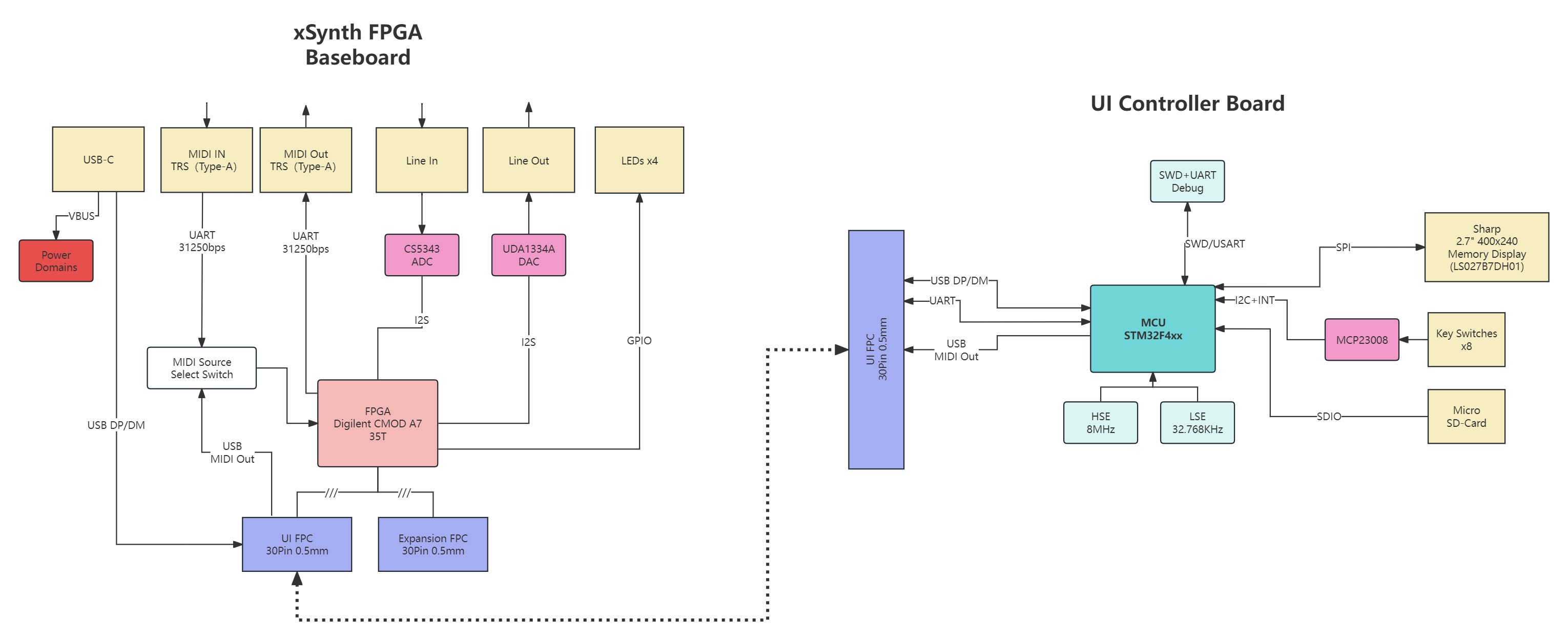Overview
This project aims to create a portable hardware platform for interacting with the XFM2, originally created by René Ceballos. The hardware is designed with portability and scalability in mind, making it not only compatible with XFM2 but also a useful open hardware platform for FPGA DSP/Synth development. It is capable of audio signal input/output and MIDI input/output, making it scalable for those who want to design custom FPGA effect processors, or for those interested in learning FPGA signal processing.

Video Demo
This video demonstrates multiple hardware oscillators being triggered by MIDI events generated by an iPad.
Hardware Build

System block diagram
FPGA baseboard: Left section of the system diagram. The design is completed and can work as standalone unit and be controlled over MIDI and UART interface.MCU board: Right section of the system diagram. It is for screen/keyboard UI controls and USB MIDI device. Hardware design is still “work in progress”.

Key Features:
- Compatibility with XFM DIY Synthesizer by René Ceballos.
- Utilizes the powerful Digilent CMOD A7 35T FPGA.
- MIDI In (Type A) and MIDI Thru/Out (Type A).
- Line-In/Out 3.5mm Jack.
- USB-C Powered.
- USB Device mode (available in
UI FPC connector). - All additional pin-outs are wired out to FPC for off-board expansions.
- All control pinouts needed for hardware UI interface are connected via one FPC.
Future Supports:
- USB MIDI Device via Type-C.
- Hardware UI controller (screen and mechanical keyboard) for user interactions.
- Micro-SD card for patch storage.
***
<!–
The Build:
PCB Design

PCB Stencil

Pick and place and reflow oven

 –>
–>
FPGA Driving Codec: Hardware Generated Oscillator
 —
—
Building your own XSynthGo
Acknowledgements
- XFM2 DIY Synthesizer, a project by
René Ceballos. - Line-Out Reference Design from Adafruit I2S Stereo Decoder - UDA1334A.
- Line-In Reference Design from Digilent Pmod I2S2.
Document Information
- Author: Hsuan Han Lai (Edward Lai)
- Link: https://adwuard.github.io/projects/XSynth-Go/
- Copyright: Free to share - Non-commercial - No derivatives - Attribution required (Creative Commons 3.0 License)



